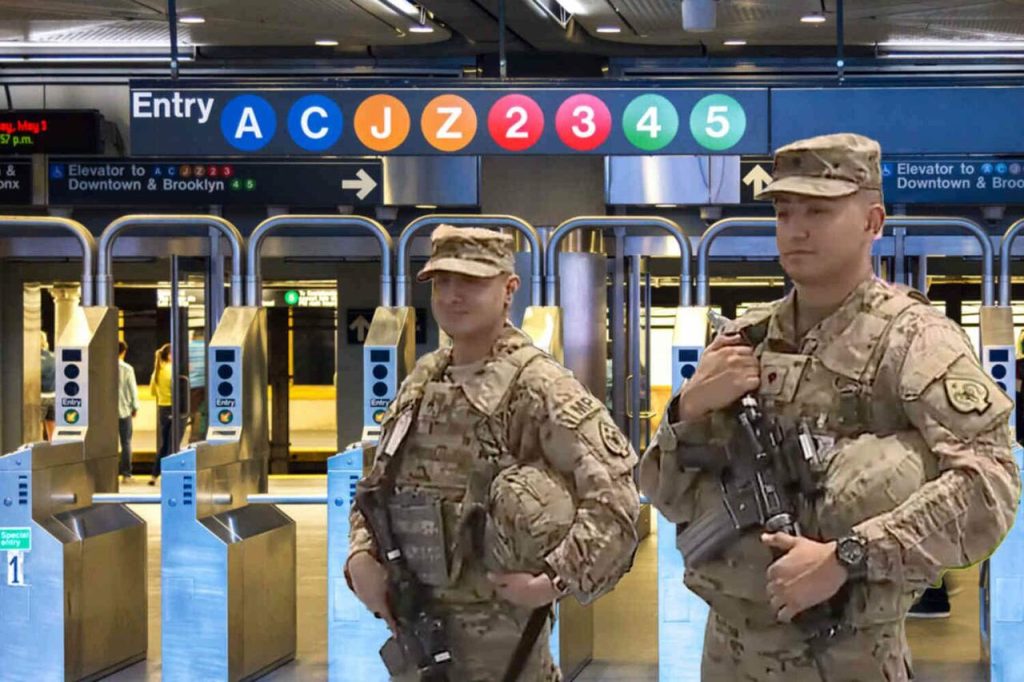New York Governor Kathy Hochul recently announced a significant enhancement to security measures in the New York City subway system by deploying an additional 250 National Guard members, supplementing the existing 750 already on duty. This marks the largest military presence in the subway since the aftermath of the September 11 attacks. The deployment comes in response to a surge in violent crime, including rapes, murders, and robberies, as well as growing public anxiety around recent reports of unidentified drones in the New Jersey-New York airspace. The heightened military presence aims to address both the physical and psychological safety concerns of riders, as Hochul emphasized the importance of uniformed personnel in assuring the public of their safety while commuting.
Amid this backdrop, Governor Hochul stated that the presence of the National Guard has reportedly made a “psychological difference” for subway riders, who feel more secure knowing help is nearby should they face any threats. While this initiative may be a temporary fix to visible crime issues, it raises questions about the adequacy of local law enforcement, specifically the New York Police Department. Some observers argue that if crime is escalating to a level requiring military intervention, there are deeper concerns that are being overlooked. Critics speculate that the government may be withholding information regarding the manifest danger, suggesting that the real issues stem from more systemic problems, such as open border policies that have brought in large numbers of unvetted migrants.
The ongoing influx of migrants in New York City, reportedly around 200,000, raises eyebrows about potential security risks, including the possibility of some being linked to terrorist activities. As the Biden administration continues to deal with immigration challenges, some experts, like Dr. Mahmut Cengiz from George Mason University, warn of rising threats that could emerge from radicalized groups. Cengiz suggests that there could be a convergence of various terrorist entities, making organizations like Al-Qaeda more formidable, especially as they align with other extremist groups, thereby posing a heightened threat to Western interests.
While Governor Hochul justifies the militarization of the subway as a response to crime, there are speculations that more nefarious threats could be at play, beyond typical street crime. This sentiment is compounded by concerns that the current political climate and policies are fostering an environment ripe for criminal activities to flourish. Given the vast spectrum of criminal behaviors and their potential implications for public safety, the rapid deployment of National Guard members reflects an escalating crisis that stretches beyond traditional law enforcement capabilities.
Hochul’s strategy of increasing military presence has been hailed by some as a necessary measure in the face of escalating fear and insecurity among subway commuters. The effectiveness of this approach, however, is yet to be fully examined. Critics argue that a robust law enforcement presence would be a more appropriate response to the current threats, supporting the notion that issues of safety and security are fundamentally connected to broader societal and policy dynamics rather than a mere law enforcement shortfall. As apprehensions regarding violence and security loom large in the city, the strategy adopted will need to be closely monitored for its consequences on both crime rates and public perception of safety.
Ultimately, the debate surrounding the deployment of National Guard troops in the subway reveals complex layers of societal tension. It highlights the intertwining issues of governance, public safety, and fears regarding terrorism. As the landscape of threats continues to evolve, the response by authorities needs to be strategic and communicative, ensuring that the public remains informed and secure while addressing the root causes of unrest and crime in urban settings like New York City. The coming months will be pivotal in determining whether these measures will make a lasting impact on the safety of commuters or merely serve as a temporary response to continuing challenges.

